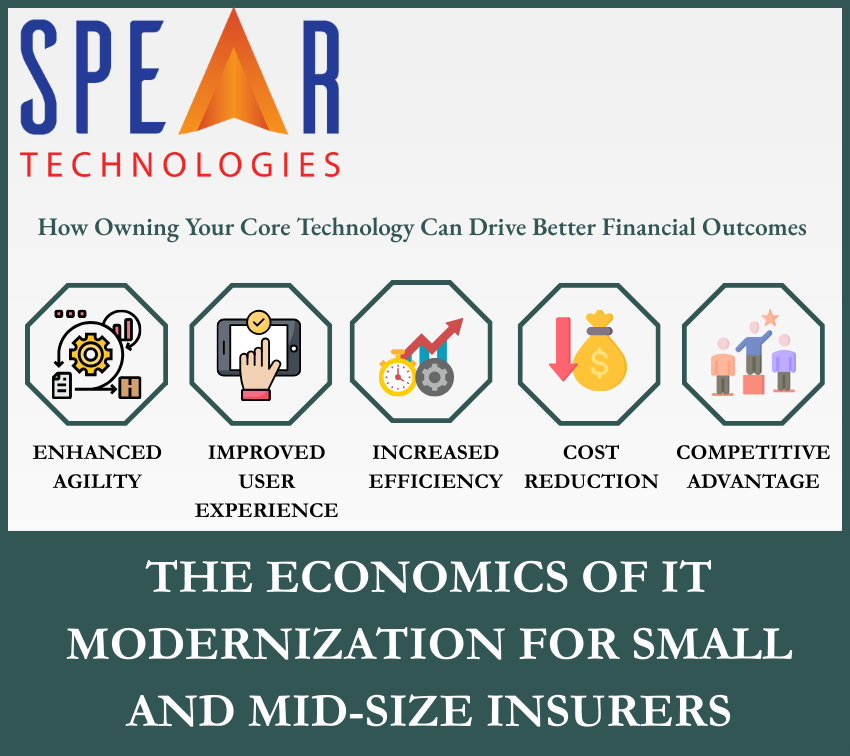How AI, Low-Code, and Customer-Managed Core Systems Are Transforming P&C Insurance The P&C insurance industry is evolving. Technology is changing how carriers manage policies, assess risk, and handle claims. AI, low-code platforms, and customer-managed core systems are driving this shift. These innovations improve efficiency and cut costs. They also give insurers more control and flexibility […]
Transforming Insurance with Low-Code/No-Code Platforms
As the insurance industry races toward digital transformation, carriers, TPA’s, MGAs and public entities are under pressure to modernize their core systems. Traditional software development can be time-consuming, expensive, and difficult to scale. Enter low-code/no-code insurance platforms: flexible, efficient, and cost-effective solutions that empower insurers to build and deploy applications faster than ever before. In […]
Enabling Self-Service Portals with Customer-Managed Solutions
In today’s digital-first landscape, customers expect convenience, speed, and control. In the insurance industry, delivering on these expectations is no longer optional—it’s essential. Self-service portals powered by customer-managed solutions are rapidly becoming a strategic priority for insurers seeking to meet rising customer demands while improving operational efficiency and reducing service costs. This article explores how […]
AI & Analytics for Insurance
How AI-Powered Insights Are Reshaping the Future of Insurance AI & analytics for insurance are no longer future trends—they are essential tools for insurers looking to compete and grow in today’s data-driven market. As carriers face pressure to lower costs, streamline operations, and deliver better policyholder experiences, artificial intelligence (AI) and advanced analytics provide the […]
How AI-Powered Core Systems Are Reshaping the Insurance Industry
The insurance industry is no stranger to disruption. But as technologies mature and customer expectations evolve, insurers are rethinking the very foundations of their operations. At the center of this transformation is the rise of AI-powered core systems — modern platforms that don’t just process transactions, but actively learn, adapt, and optimize. This isn’t just […]
The Economics of IT Modernization for Small and Mid-Size Insurers
Why Owning Your Core Technology Can Drive Better Financial Outcomes For small and mid-size P&C insurers, every investment must deliver meaningful value—and technology is no exception. As core systems become outdated and vendor lock-in continues to drain resources, many insurers are reevaluating the true cost of traditional vendor-managed solutions. The good news? A modern, customer-managed […]
Spear Technologies Launches Next-Generation AI Capabilities to Transform Claims Management and Policy Administration
DENVER, CO — Spear Technologies (“Spear”), a leading provider of award-winning core software solutions for the insurance industry, today announced a suite of advanced AI enhancements designed to streamline operations, boost productivity, and enable faster, data-driven decision-making across SpearSuite™—its award-winning suite for claims management, policy administration, billing, and portal solutions. The new capabilities leverage generative […]
The Business Case for Low-Code/No-Code Platforms in P&C Insurance
A Smarter Way to Innovate and Operate As P&C insurers look to modernize operations, improve agility, and deliver better customer experiences, one technological trend is standing out: low-code/no-code insurance platforms. These platforms are transforming the way insurers configure, extend, and deploy core systems—without the long timelines, steep costs, or technical debt associated with traditional software […]
Future-Proofing Your Insurance Business with a Flexible Technology Stack
Adaptability is the New Advantage In the face of shifting customer expectations, regulatory changes, and emerging technologies, one thing is clear: flexibility is no longer optional—it’s essential. For P&C insurers, a rigid, legacy technology stack can severely limit innovation, increase operational costs, and leave the business vulnerable to disruption. To stay competitive and resilient in […]
Overcoming Vendor Lock-In: How Insurers Can Take Back Control of Their Technology
Breaking Free from Technology Constraints In the rapidly evolving insurance industry, technology is a key driver of efficiency, innovation, and customer experience. However, many P&C insurers find themselves trapped in vendor lock-in, where their core systems are controlled by software providers who limit flexibility, increase costs, and slow down business agility. Vendor lock-in occurs when […]










